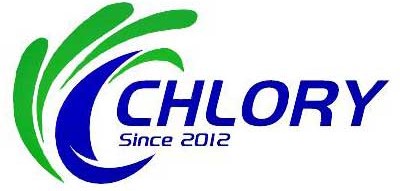Heavy metal pollution (such as lead, cadmium, arsenic, etc.) is an important factor affecting the safety of agricultural products such as broccoli. Acid electrolyzed water (AEW) and alkaline electrolyzed water (BEW) are common cleaning technologies, but their removal effects on heavy metals are significantly different. Their mechanisms of action and limitations are as follows:
Effects of Acidic Electrolyzed Water (AEW)
pH range : 2.5~6.5 | Oxidation-reduction potential (ORP) : +800~+1200 mV
Mechanism of action :
The low pH environment promotes the conversion of heavy metal ions (such as Cd²⁺, Pb²⁺) from bound to free states, thereby increasing their water solubility.
High ORP enhances oxidation capacity and destroys the complex structure of heavy metals and organic matter (such as binding with proteins and polysaccharides).
Experimental results :
cadmium (Cd) and lead (Pb) can reach 40%~60% (depending on the concentration and immersion time).
of arsenic (As) is relatively weak, because arsenic often exists in the form of anions (AsO₃³⁻/AsO₄³⁻), and the acidic environment is not conducive to its dissolution.
shortcoming :
Strong acidity may destroy the cell structure of broccoli and lead to the loss of nutrients such as vitamin C and chlorophyll.
Residual acidity may affect the taste and require additional rinsing.
Effects of Alkaline Electrolyzed Water (BEW)
pH range : 8.0~11.0 | Oxidation-reduction potential (ORP) : -800~-900 mV
Mechanism of action :
Under high pH conditions, hydroxyl radicals (·OH) can oxidize and decompose organic ligands of heavy metals (such as heavy metals bound to phytic acid and cellulose).
Some heavy metals (such as Pb²⁺, Cd²⁺) form hydroxide precipitates under alkaline conditions, but they need to be removed by subsequent washing.
Experimental results :
of lead (Pb) is relatively high (about 50%~70%) because it easily forms Pb(OH)₂ precipitation.
on cadmium (Cd) is average (30%~50%) because the solubility of Cd(OH)₂ is relatively high.
against arsenic (As) , and an alkaline environment may even increase its solubility.
shortcoming :
Alkaline residues may change the flavor of food and need to be neutralized.
The sediment may re-adhere to the surface of the broccoli and require physical cleaning (such as ultrasound).
Comparison and limitations
|
Index |
Acid Electrolyzed Water (AEW) |
Alkaline Electrolyzed Water (BEW) |
|
Heavy metal removal rate |
Cadmium and lead are better, arsenic is weak |
Lead is good, cadmium and arsenic are weak |
|
Nutrient Retention |
Large loss of vitamin C |
Chlorophyll is more stable |
|
Security |
Need to adjust pH, may corrode equipment |
Alkali residues require additional treatment |
|
applicability |
Suitable for free heavy metals |
Suitable for precipitation of heavy metals |
Common Problems :
of organically bound heavy metals (such as arsenic-sulfur complexes) is limited.
Extreme pH may affect the quality of food and increase subsequent processing costs.
Optimization Solution: Advantages of Hypochlorous Acid (HClO) Technology
The limitations of acidic/alkaline electrolyzed water have prompted the industry to turn to more efficient solutions, such as Chlory's
hypochlorous acid generator :
Neutral pH (5.0~7.5) : Avoid nutrient loss while efficiently oxidizing bound heavy metals.
Broad-spectrum oxidizing property : Hypochlorous acid (HClO) can decompose stubborn compounds such as arsenic-sulfur bonds, improving the overall removal rate.
No residue and safety : The decomposition products are only water and chloride, which meets food safety standards.
Experiments show that after 5 minutes of treatment with 50ppm hypochlorous acid water, the removal rate of lead and cadmium in broccoli is 20%~30% higher than that of AEW/BEW , and the nutrient retention rate exceeds 90%.
In conclusion
Acidic electrolyzed water is effective for free cadmium and lead, while alkaline electrolyzed water is suitable for precipitated lead, but neither can completely solve the problem of heavy metal pollution. Hypochlorous acid technology has become a more promising alternative due to its neutral, efficient and safe characteristics.
Contact:
Company website: www.chlory.com
Email address: [email protected]
